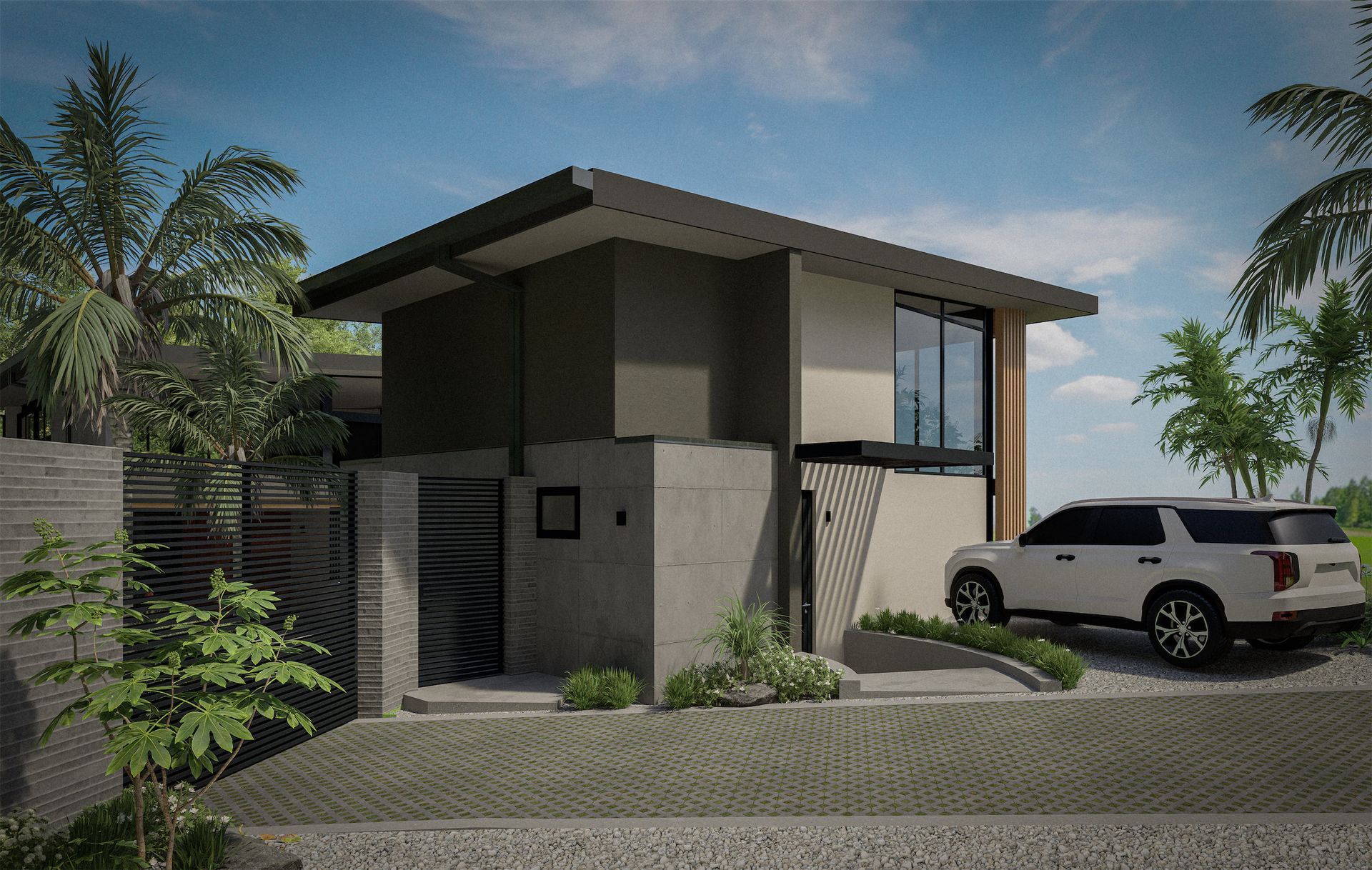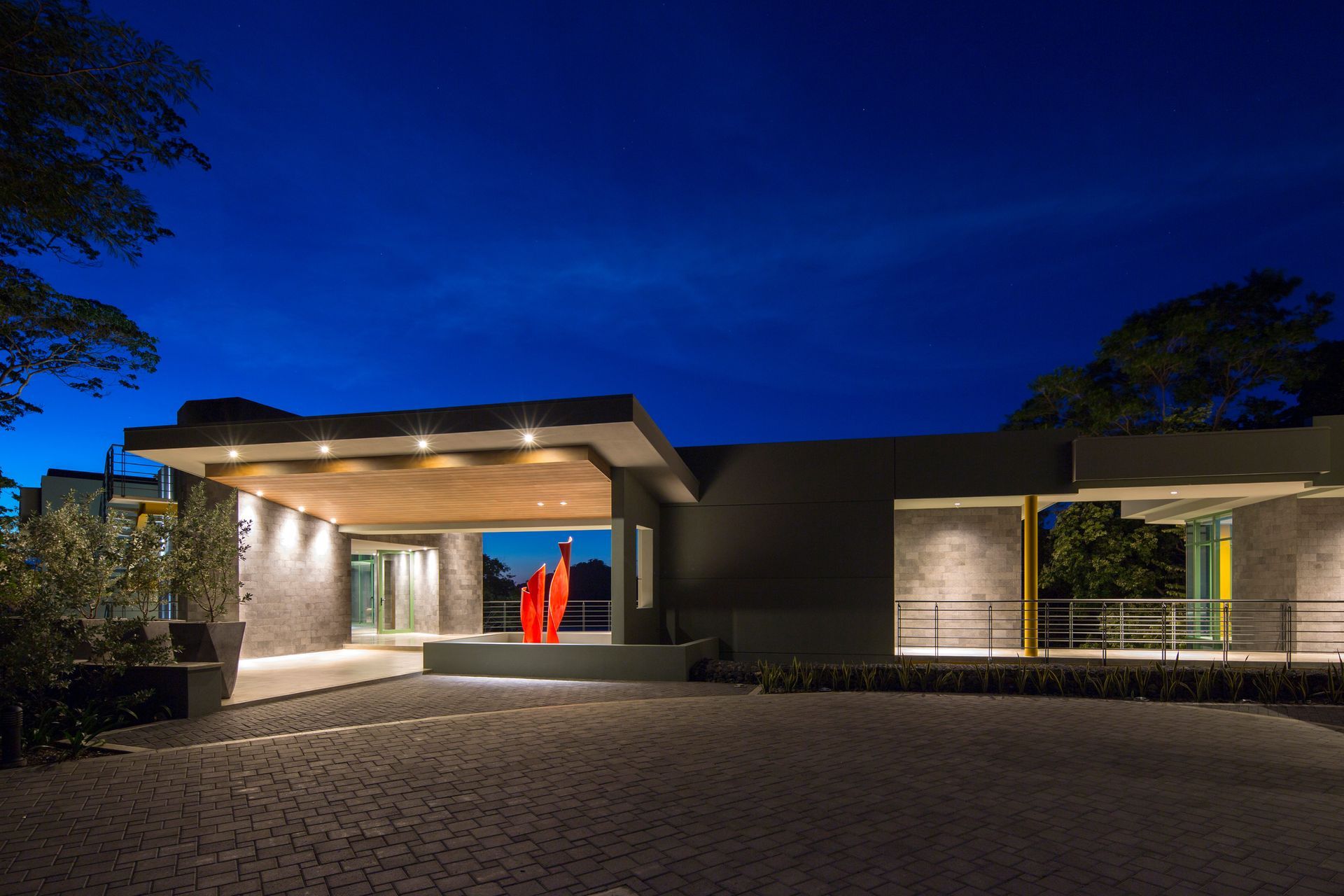How to Design a Home in Costa Rica
When it comes to building a house in Costa Rica, the possibilities are endless. From residential and custom homes to luxurious vacation properties built with investment in mind, Costa Rica real estate has its appeal.
Right now, the Costa Rican real estate market is booming and the appeal is at an all-time high.
Having said that, the process of building a home in Costa Rica requires careful consideration and thought.
Many of our clients first come to us believing that Costa Rica construction costs will be significantly cheaper than in the United States, with less red tape and faster-moving timelines.
While this can be true (if project owners select the right architecture and design firm!), you tend to get what you pay for when it comes to Costa Rican properties.
High-quality materials, prime land for your construction site, and building permits follow similar themes in terms of cost and procedure to the U.S. With the right firm in charge of your design and build, your dream home in Costa Rica can far exceed the value of an offer in the U.S.
If you’re wondering what the process of designing a home in Costa Rica involves, we’re here to delve deeper than just Costa Rica construction costs and building permits.
In this article, we’ve outlined the five main stages of designing your dream home in Costa Rica. You’ll find:
- Information about the design phases
- How to prepare for each stage of the build
- How to navigate certain challenges
- The differences between building in Costa Rica vs the U.S.
Five Stages To Designing Your Dream Home
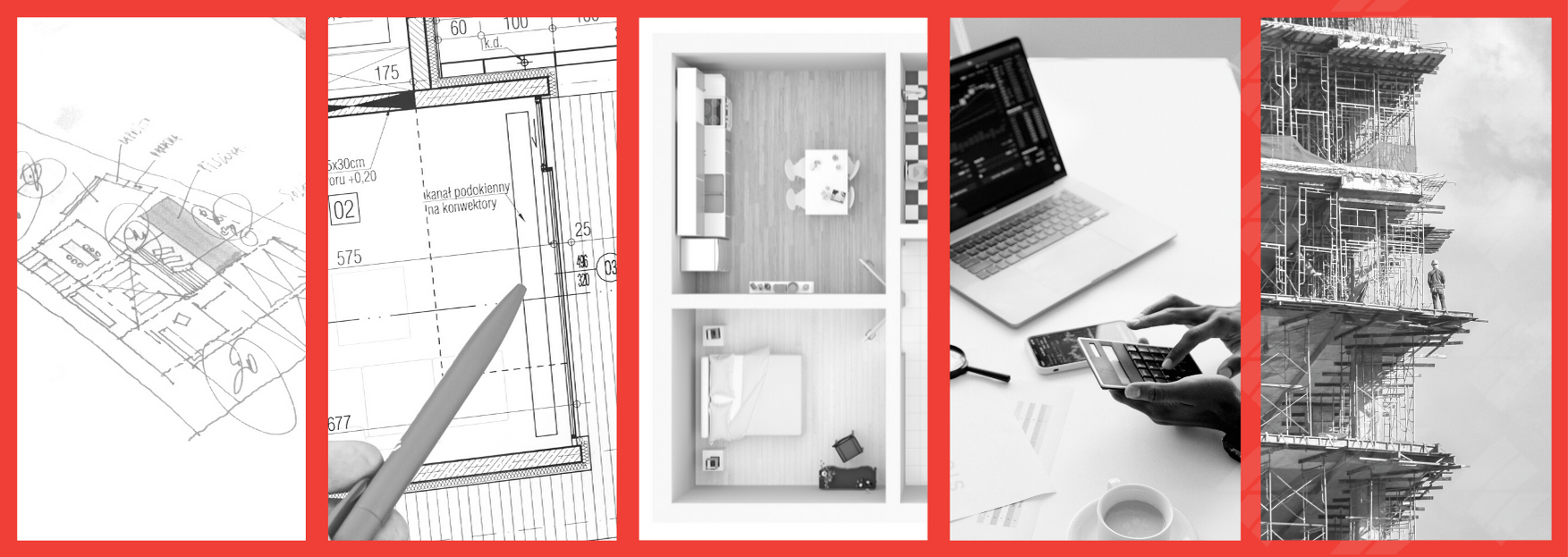
At SARCO Architects, we use a five-stage process to bring the design of your dream home to life.
For both humble residential projects and more luxurious homes, we use the same process for everyone. Of course, for custom builds and high-investment properties, the process will naturally be more in-depth.
1. Pre Design or Programming
At this stage, you, the client, are given the opportunity to develop a brief for the design you’re envisioning and the results you want delivered. We collect most of the information from you at this stage, ensuring good communication from the beginning is established.
At this stage, we also tend to begin an investigation of your site in Costa Rica. Studies on the site will need to be carried out, including the use of a surveyor.
Costa Rica construction costs can vary hugely depending on the type of site you have, so we’ll always be upfront with you at this point about our opinion on your design choices. If a material such as concrete is your first choice at this stage for your building lot, we’ll let you know at this early stage how that’s going to work in practice.
2. Schematic Design
This stage is usually the most creative and fun part of the design process. If you have the right team in place, this stage is where you get to experience how easily your dream home can become a reality. During this phase, your project will be presented to you three-dimensionally, with preliminary drawings to tie the core concepts of your design together.
There are many different design styles and different approaches to architectural solutions for your project in Costa Rica, so finding the right one for you should feel exciting. This is why, once presented to you, your design will be discussed at-length to pinpoint any areas you’re immediately unsure about, or might require further clarification.
From unique floor plans to roofing that fits the Costa Rican environment, whatever way you want your home to look and feel— our team will ensure that it is aesthetically pleasing, functional, and feasible from the beginning.
Because this stage is all about fine-tuning the initial predesign that the client started out with, we like to get our ideas down on paper and integrate our expertise with the client’s own vision. At this stage, it’s all about communicating effectively and ensuring our client is aware of every way in which their original design can be elevated.

3. Design Development
This stage of the design process is more technical. This is where we actually start to build the ideas that we have come up with for you. At this stage, you are welcome to be involved in areas such as choosing the construction materials and signing off on final concepts, but overall, you just need to look forward to receiving your final design during this phase.
During design development, we bring our construction drawings to life using the latest in leading-edge 3D BIM modeling, VR, and live visualization technologies. This allows us to create designs that you can walk through digitally in a 360° format and make sure it meets your exact vision before moving to the construction phase. You can get a feel for what your house build will look like, all remotely.
If, during the schematic design phase, some specific parts of the design needed a bit more thought, during the design-development phase, we can delve deeper into fine-tuning your design options before working to expand on your final design.
For example, with your kitchen plan, during the schematic design phase we lay out the arrangement of your kitchen and where everything goes. Then, in the design development phase, we will start detailing the specific choices of materials and surfaces and include the exact dimensions of everything.
This is where good communication is essential on projects such as this. It’s always better for your architect and builder to be aware during the design development phase what they can do to ensure that your home is perfect.
During this stage, we also carry out further studies to ensure that our final design is feasible. Soil studies, percolation testing, and slope analysis could be important at this stage. These are done on a location-specific basis, as needed, after the project is designed to help the engineers determine where the house should sit.
Particularly in Costa Rica, construction sites can fall victim to unforeseen complications if not carefully evaluated beforehand. At SARCO, we leave nothing to chance.
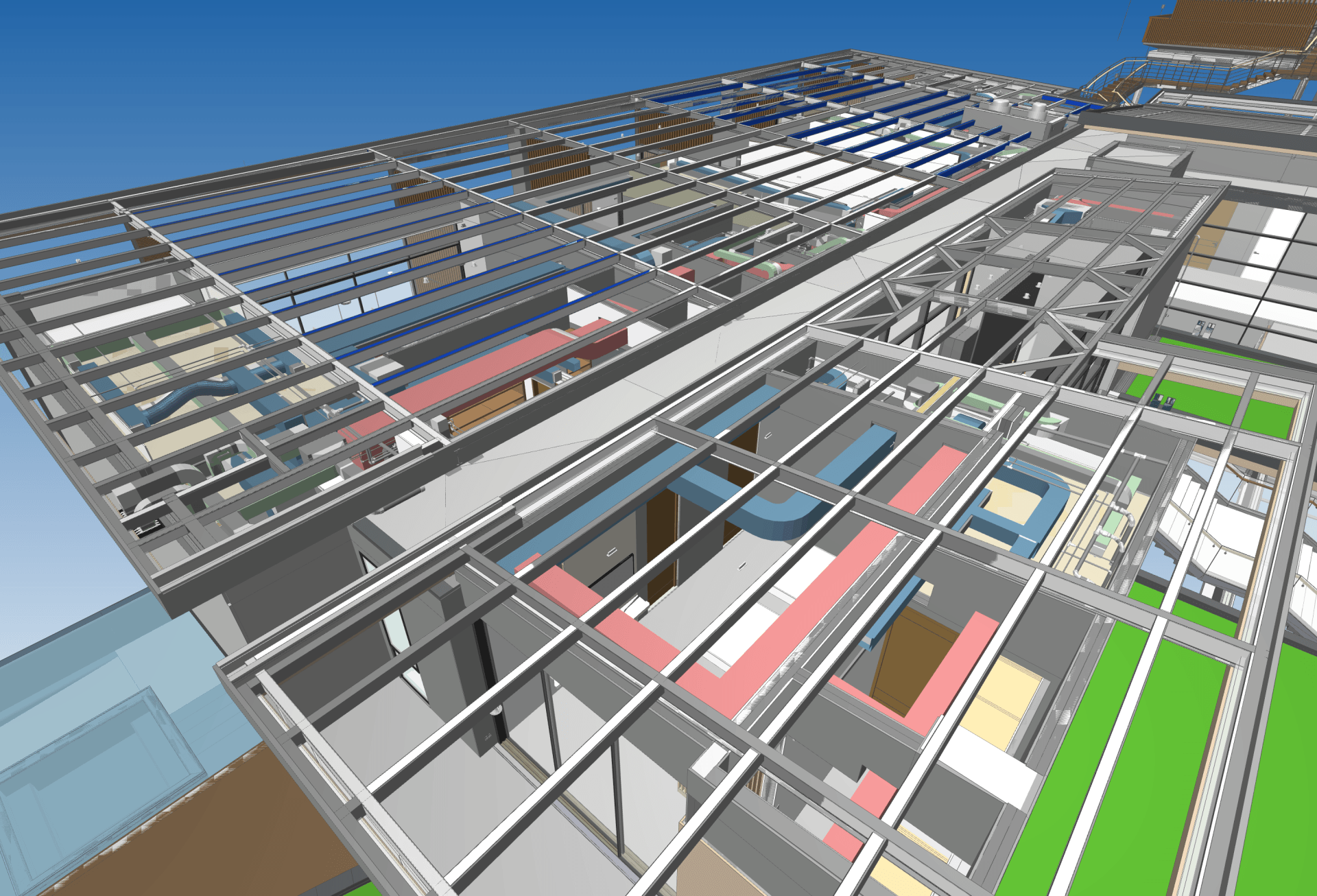
4. Costing
While top-tier design is a priority for our firm, Costa Rica construction costs are also something that need to be taken into consideration. As we’ve already mentioned, you tend to get what you pay for in Costa Rica, so ensuring that your materials and components of your interior design are of a high standard takes planning.
Before the construction phase begins, we go through every element of your design and put together an accurate overview of what your budget should look like.
Some architects include allowances, which is an estimate for unknown expenditure. At SARCO, we don’t do this — we put the work in to find your final cost early.
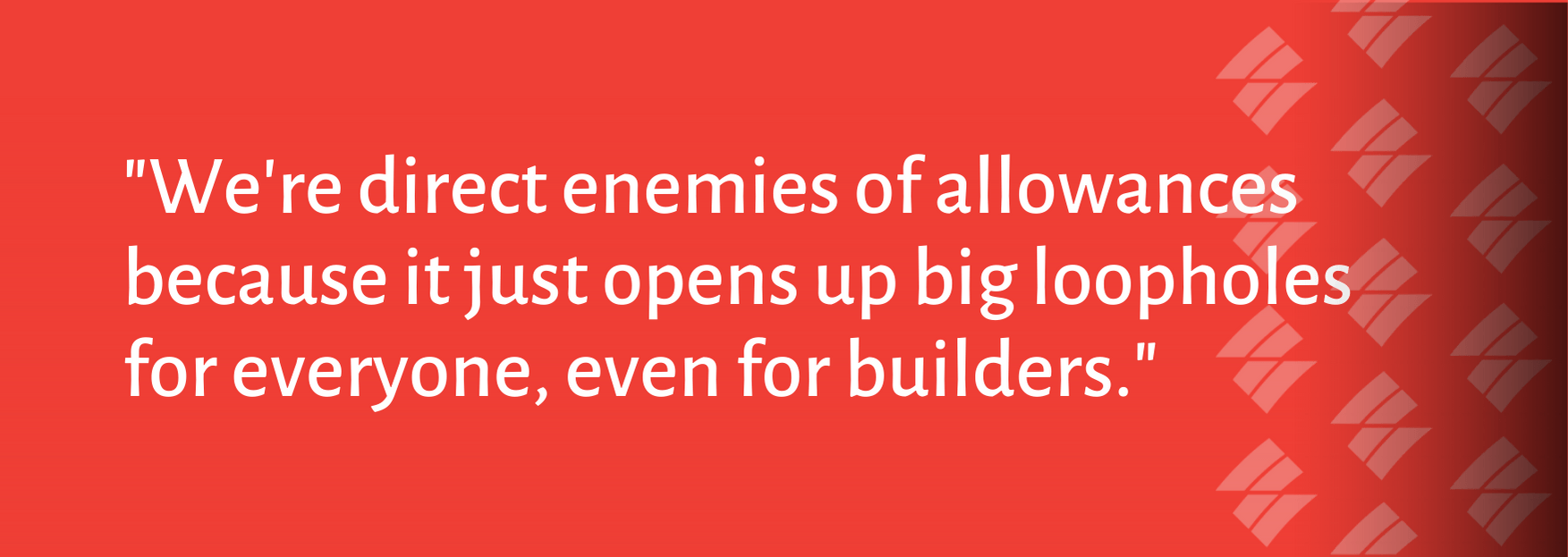
This also means working at a higher level on the design part, making sure all selections, specifications, and design decisions are completely finalized and detailed, in order to allow for proper costing. The ugly concept of allowances goes hand-in-hand with lazy and incomplete design.
For example, if you're looking at natural stone flooring, there is a huge price difference between Grade A and Grade D or E stone. If you're not experienced and knowledgeable about stone quality, you can't really tell which quality is which. You can see a sample that looks great, but when you actually get the product, then it looks completely different.
If your architect is lazy and just puts a general allowance for stone flooring, that allowance could only cover the cost for Grade D or E stone. If you really want Grade A, you end up with an estimate that will need major increases later on.
Another example of this is porcelain tile flooring. If your architect goes to some stores that offer up generic materials and asks the salesman "What brand is this?", he will likely get told something like, "Brazil".
In reality, there is no brand at these types of stores, because they buy in bulk from cheap, generic manufacturers without much quality control, etc. Again, by not pricing the exact porcelain tile flooring you want in your home, your architect is giving you an estimate that will need to be increased later on.
We always go to reputable, factory-backed stores where you can have very clear specifications on the material that you are choosing, where you will understand the rating of the grip level, the variability factor of the tiles, the level of dimensional accuracy, etc.
"That's why having a detailed design and doing a complete process of interiors and specification of materials is necessary. We're direct enemies of allowances because it just opens up big loopholes for everyone, even for builders. If tile A suits your project better than tile D, you should know exactly what tile A is going to cost from the beginning.
Our process also reduces the risk of builders cheating the client. If your architect doesn’t specify which tile they want, the builder can put low quality in there and still meet the brief — even if it’s not the quality of flooring tile you wanted."
- Roderick Anderson, CEO & Design Director, SARCO
At the end of our costing stage, you should have a final construction cost that’s accurate and realistic to the design decisions made together along the way. Costa Rica construction costs can sometimes work a little differently than you might expect (we will go more into this later), but once you have the right firm in charge, you’ll have a much easier time.
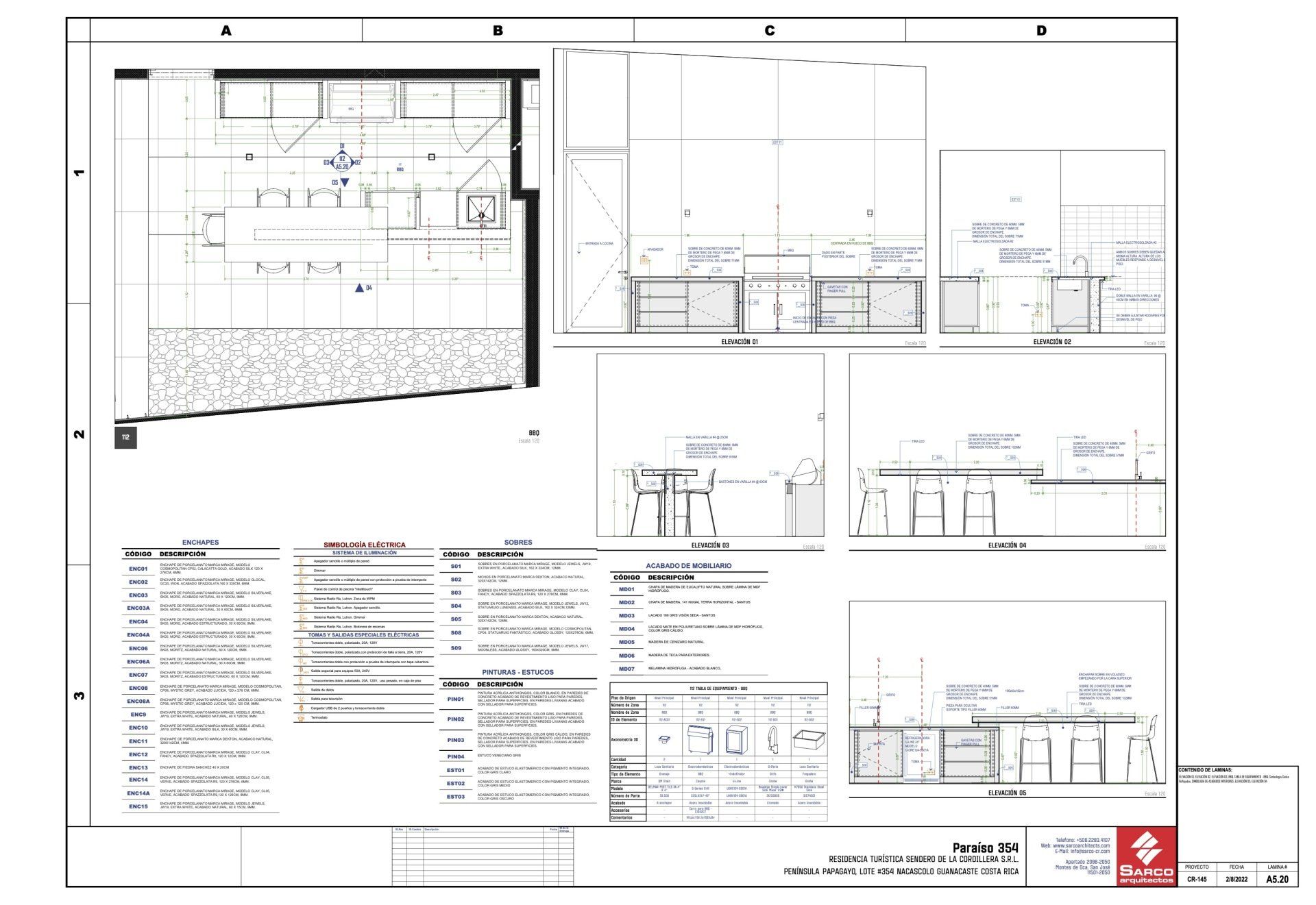
5. Construction
If you choose Sarco as your builder, we can take care of your entire home build. From ensuring that you have the right construction permits, to coordinating with subcontractors — we streamline the design-build process. With our design-build service, we prevent design and construction clashes by delivering everything you need through one cohesive process.
With design-build, your project is managed through a single-source contract. Everything your construction needs will be taken take of by the same team, from design phase to hand-off. If you’d like to know more about the design-build process, you can read about design-build here in one of our previous articles.
We highly recommend design-build if you want the highest level of success for your high-end luxury tropical vacation home. With all services taken care of under one umbrella, issues are identified more easily and solutions are provided more cost-effectively. From surveying your land to interior architecture, it can all be taken care of by the same team.
Our single-source responsibility allows you to know that your dream home is in safe hands, without having to constantly check in with several different players. From the design to construction phase to handoff — we’re the only point of contact you’ll need the whole way through.
What If You Hire Another Company for Construction?
If we’re only hired for our architectural services and not for design-build, we will not handle the construction phase. If this is the case, the final detailed costing shall be provided by the builders.
We can assist with a review process of their proposals, to ensure they are all apples-to-apples, and to review if they are complete or not. Also, we can assist with some preliminary costing of some specific finishes and bulk items, which can help for comparison with the builder's proposals.
With a design-build project, the design and construction teams work together to establish how to optimize your design from the beginning. From the best materials to the most appropriate timeframes, we’re in control of your costs from the offset.
Without this same level of collaboration, it can be difficult to account for costs that we’re only made aware of after construction has begun.
How to Prepare For Each Stage
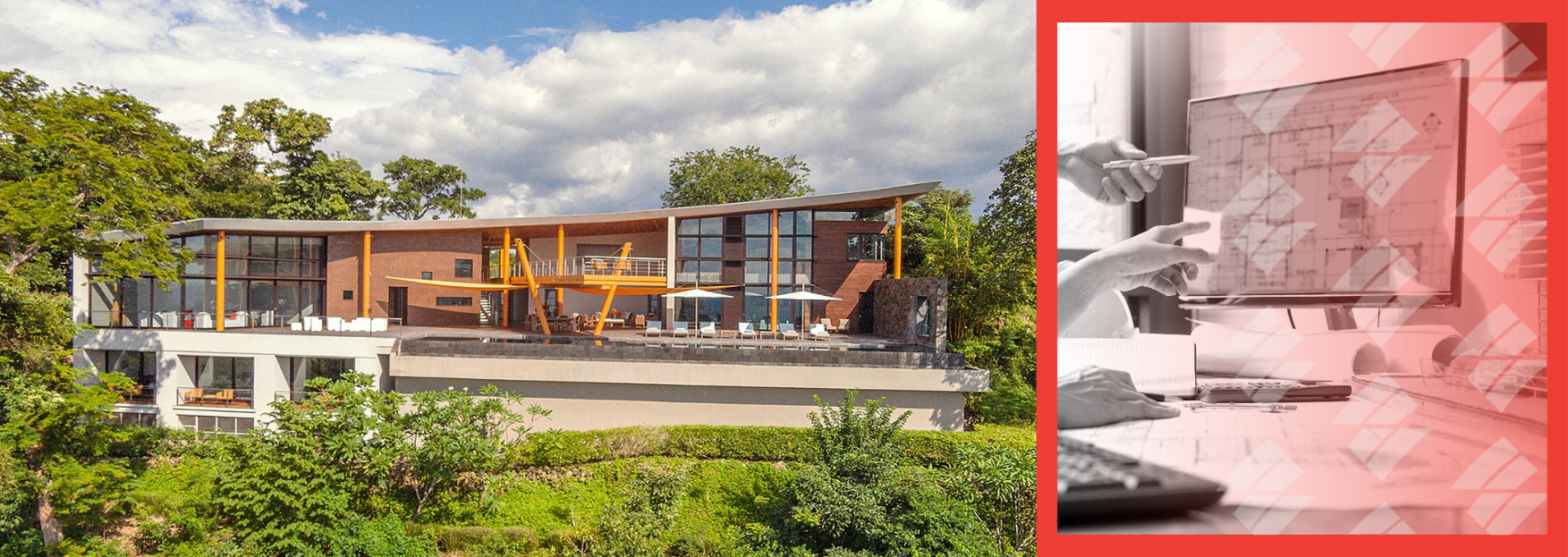
For each client, we like to ensure they know from the beginning how involved they’ll need to be at each stage of the design and construction process. The main benefit of design-build projects is the effort required by you, the client, is minimal, with the schematic design stage usually being the main phase we need involvement from you.
Even though you are responsible for delivering your brief, we will always be on hand to help. This includes helping you set a budget. Often the budget and the brief won't match, so our experts will be on hand to help guide you as much as possible on how to adjust your brief to suit the cost you’re willing to spend.
Once you have delivered a strong brief with as much information as possible, it’s mostly just up to us to deliver a home that exceeds your expectations.
At every stage of our process, you should plan on having as good communication as possible. We will have a series of meetings and get to know you as much as possible—building trust along the way. We usually have our meetings via Zoom, but if possible, we like to have at least one face-to-face meeting.
However, having worked with international clients for over 18 years now, our expertise is in providing excellence in our services and our communication with our clients who are usually never here. We leverage technology to make this happen, and allow our clients to be in the loop and current to what's happening with the project while they are thousands of miles away.
The most important thing to remember when communicating with us is that your house in Costa Rica is just as important to us as it is to you — we all have the same goals in mind, so we want our clients to know that they can rely on us to design the best kind of property they could hope for. We design the house you want, in a way we know works.
"We want to relate to our client's personality because we design custom or bespoke luxury homes for our clients. The homes we build need to reflect the personality and lifestyle of our clients.
We consider how they want to use the home and where they see themselves today, five years from now, 10 years from now. We take into account what they see happening in their home as they age and their family gets older.
Homes need to grow with people, as their priorities change and their lives move forward. This is why effectively communicating with our clients and getting to know them beyond their brief is essential."
- Roderick Anderson, CEO & Design Director, SARCO
Decisiveness is key when it comes to keeping your project on track. From our clients, we can offer support in the decision-making process but because it’s your custom home or luxury property, you’ll always have the final say.
How Long Does It Take to Build a Home in Costa Rica
In Costa Rica, you can expect a high-end luxury home to take approximately 2.5 years to complete—1 year for design & approvals and 1.5 years for construction.
This includes (on average):
- Schematic design 8-10 weeks
- Design Development and full construction drawings 5-6 months
- Building permit and approvals 2-3 months
- Construction 1.5 years
Important note: There are major differences between Costa Rica and the U.S. when we are talking about home size. In the U.S., you only include the interior living space in the house size. In Costa Rica, you include all buildings under the roof, plus the pool. Garages, pools, outdoor patios, etc. are all included in the square footage in Costa Rica.
What this means is that the square footage for the same home will be considerably higher in Costa Rica vs. the U.S.
It's also important to note that luxury homes in Costa Rica tend to be larger than their city counterparts because people want to build lots of outdoor spaces to enjoy the warm weather.
What Can Cause Delays and Increase Costs on a Project?
There can be several causes of delays and an increase in cost for a project. In our experience of building in Costa Rica, these can include:
1. Clients not providing feedback quick enough or being indecisive

The number one cause for delays and budget problems is clients not giving timely feedback or being indecisive. This back and forth can be detrimental to development projects because indecision can kill budgets and schedules.
If you want your project to stay on track, we recommend trying your best to trust us and respond as quickly as possible to decisions that you have the final say on. It’s always our pleasure to provide additional support to clients who need it, so good two-way communication is a key component of avoiding delays.
2. Manufacturing delays

Manufacturing delays are always a concern when it comes to home builds, especially when dealing with luxury homes or custom homes. These delays are often unavoidable, but a good architect should be planning ahead to avoid this.
Particularly with supply chain issues arising from both the aftermath of the Covid-19 pandemic and political unrest, keeping projects on track requires especially good management skills and the ability to adapt quickly.
By doing the final costing early in the design and not relying on allowances, we can also get ahead of delays by ordering parts earlier in the process.
When it comes to Costa Rica construction costs, it’s also important to remember that planning for all eventualities will help keep your project within budget — even if schedules change.
A good architecture firm who knows the local area will know which partners are the most reliable, and which ones can be trusted to deliver the construction materials and services required. Even if unforeseeable circumstances arise, a good firm will have good enough rapport with trusted suppliers to find alternative solutions quickly.
"Two and a half or three years ago, we would say, “I'm going to place an order now for my kitchen cabinet from Spain, and I'll have them in 12 weeks.” Now you can't do that, you have to place orders way ahead of time. If you're lucky, you may get them in 24 weeks.
We're now placing orders for kitchen appliances 12 months out because that's what manufacturers are telling us to do. It’s all about careful planning and adapting to how the industry is moving. We keep our clients informed and if there’s any issues, we know how to find the solutions to keep things on track."
- Roderick Anderson, CEO & Design Director, SARCO
3. Not having a detailed enough design process

At SARCO, we have 3 tiers of service. Our high-end services include additional design services like interior architecture and lighting design.
What is interior architecture? We like to tell clients that if they were to turn their building upside down and shake it, anything that doesn't fall out the windows and stays in the building is in our scope for interior architecture! If you decide to hire someone else to do your interior architecture (or you want to do it yourself), those decisions can delay a whole project.
For example, we need to know specific dimensions of the appliances and equipment in the kitchen to get the right dimensions for the cabinet fabrication and to ensure the total room size is correct. When we’re in charge of this, and everything else, the process works much more seamlessly.
United States VS Costa Rica: Differences When Designing Homes
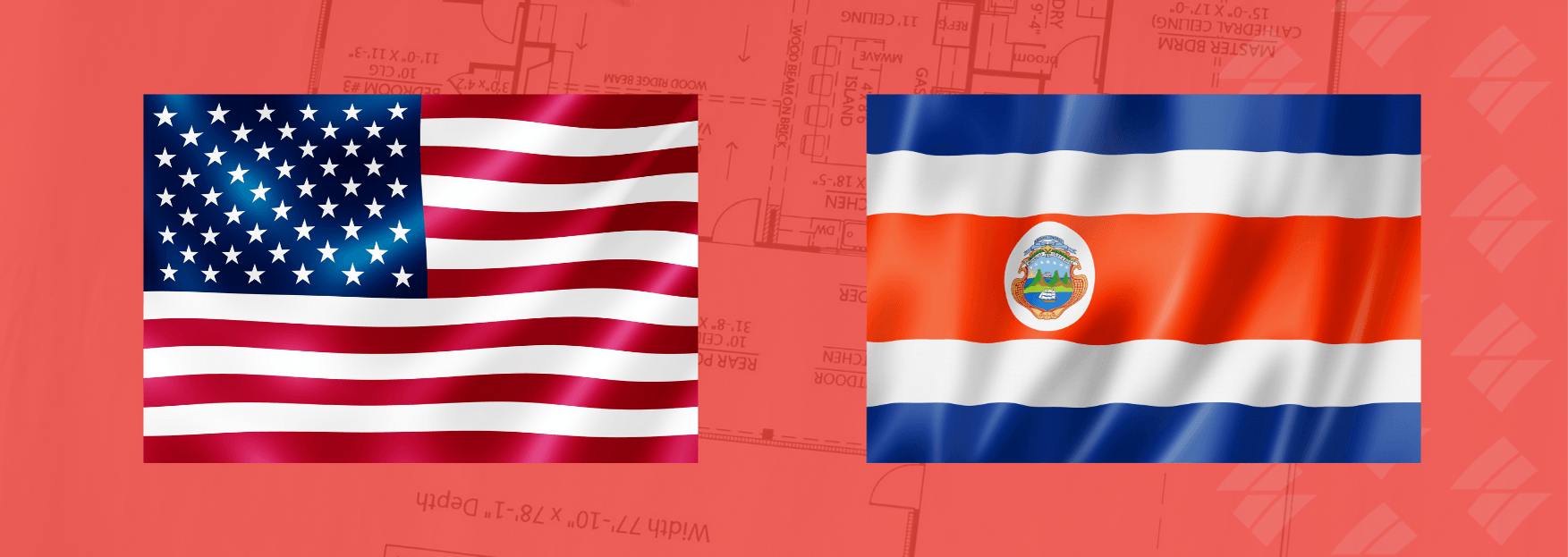
Ultimately, designing a home in the U.S. and in Costa Rica follow a similar process. This is especially true when you choose an established architect in Costa Rica. It means that if you have experience with an architect in the U.S., you will more likely understand how the process works in Costa Rica.
However, there are some differences:
1. Architects in Costa Rica have more direct liability
In Costa Rica we don't have the typical county inspector process where there are certain milestone inspections where the county inspector goes to the site and signs off on the project being built correctly and to code so the project can progress.
Unlike in the US, the liability falls entirely on the design professionals. That means it is key to work with people that will make sure that things are being done correctly.
If you find yourself dealing with an architecture firm with suspiciously low building costs, it’s worth investigating their background and previous projects performances, etc.
Also, it is worth making sure their promised low costs are accurate compared to final build costs. This helps you understand if they fall under the umbrella of those that promise very low costs to simply land the design jobs, but that in reality the projects end up being significantly over budget in the end.
Or, to put it in other terms, the projects may cost what they were supposed to cost all along, but that number was always extremely distant to what they offered in the beginning when they were just trying to secure the design job.
2. The approval process for permits is different
The approval process for permits is more nationalized in Costa Rica. In the U.S., states have different approaches, but in Costa Rica, approval occurs through a centralized digital system.
One issue with this is that some municipalities aren't in the system. When this happens, after all the initial steps have been completed via the central digital system, documents need to be printed out and physically taken to municipalities for their final review and approval.
This makes the process go back to how we were doing things 20 years ago, and also loses some level of timeline tracking on the process.
The good news is that a full-service architect will be able to expedite this process and help get all of your documents in order on your behalf.
3. Interior living space vs. total build size
We already mentioned this in a previous note, but we want to discuss it again. This can be confusing for people coming from the States and it is important to understand the difference.
In the U.S., the “total area for construction” of your build typically only includes indoor living space, it doesn't include outdoor spaces, service areas, garages, pools, or outbuildings. In Costa Rica, the total area for construction is the total area of the roof, plus the swimming pool. This includes the garage, outdoor living space, laundry or service spaces, and any other outbuildings.
This can have a significant impact on what you might be told about Costa Rica construction costs. If a realtor tells you something will cost a certain amount per square foot, you might not be getting the whole story, or could easily make the mistake of calculating preliminary cost numbers that are inaccurate, simply because you are assuming that project areas are considered the same as in the U.S.
For example, if a realtor in Costa Rica tells you that it will cost $150 per square foot to build a home. If you know you want a 2,000 square foot home, you will do the math and figure it will cost $300,000 to build your home.
In reality, you need to also add in the square footage of the garage, outdoor living spaces, and other outbuildings you want to include in your home design. This means the actual cost of your dream home will be much higher than someone like a realtor might lead you to believe.
Is There a Difference In Cost Between Costa Rica and the U.S.?
As we’ve discussed, there is often an expectation that construction costs in Costa Rica will be lower than in the U.S. This is not the case. However, your value for money can be greater.
The average price of building a Costa Rican home will depend on many factors, but the most important ones will be the size of the home, the geographical location, the accessibility to the site, the nature of the build, and the quality of materials that you opt for. The cost of building materials that are typically lower than market price might seem like an attractive option, but other expenditures will often end up being higher later on.
If you opt for cheap windows, no insulation, tiles that aren’t durable, and fixtures that don’t last — these choices will be noticeable in your final design. Low-cost builds often aren’t made to withstand the aggressive weather, earthquakes, etc. that Costa Rica can sometimes experience.
Our clients choose Costa Rica for their home builds because it has qualities that other locations don’t have. It’s a unique and highly-enjoyable place to have a home, and because of this, many of our clients know that the money they invest in their property is worth every dime for a lifetime of happiness.
SARCO Architects “Puro Lujo” Approach

Now that you…
- Understand more about the design process
- Know what you need to do to prepare for each stage of the process
- Know the challenges that can cause delays and overspending
- And, know what can be done to overcome those challenges
We hope that you will have the tools needed to enjoy the process of building your home in Costa Rica.
After all, our home designs are based around the concept of “puro lujo” or “pure luxury.” A big part of our approach to luxury is your experience during the design and execution. We want you to enjoy the process from start to finish, and we make it easy for you to design and build your dream home from thousands of miles away.
If you’d like to know more about our process for building your dream property in Costa Rica,
take your first steps with us. You can also call us at 1-646-712-9299.

